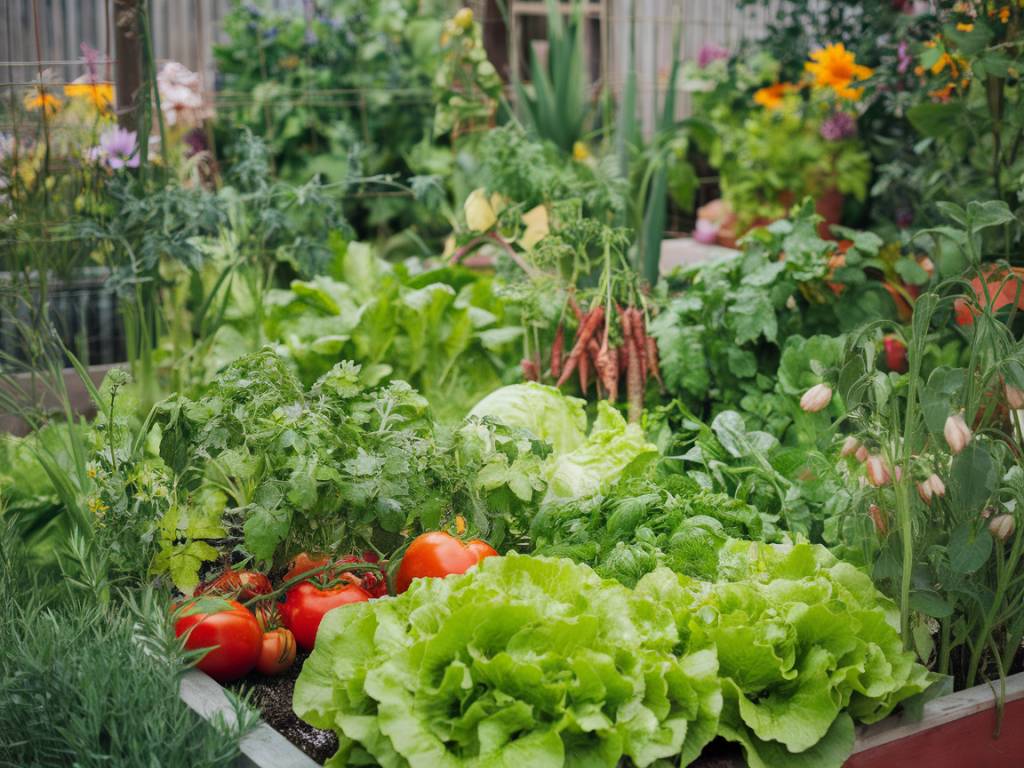The Appeal of Growing a Vegetable Garden in Small Spaces
Who says you need a sprawling backyard to grow your own vegetables? Whether you’re living in a cozy apartment or have a compact urban garden, cultivating a vegetable garden in small spaces is more than possible—it’s incredibly rewarding. Imagine plucking fresh basil for your pasta or pulling out crisp lettuce for a salad, all grown just steps away from your front door. Sounds amazing, right?
If you’ve been hesitant to start your own vegetable garden due to space limitations, don’t worry. This guide will show you how to maximize your space and resources to create your little slice of green heaven. Get ready to roll up your sleeves and make the most of what you’ve got!
Select the Perfect Location
The first step to a flourishing vegetable garden is finding the right spot. But what if all you have is a balcony or a windowsill? No problem! Several vegetables thrive in containers and limited spaces as long as they have access to sunlight.
Look for a location that gets at least 6 hours of sunlight per day. South-facing balconies or windows are ideal. If you’re dealing with shaded spaces, don’t worry—you can grow shade-tolerant veggies like spinach, arugula, or even some types of herbs like mint and parsley. No yard? No problem. Let your creativity shine!
Choose the Right Containers
When working with small spaces, containers are your best friend. They’re versatile, portable, and come in various sizes, perfect for growing different types of plants. The key here is to choose containers that are the right size for the vegetables you want to grow.
- Small herbs: Use smaller pots around 15-20 cm in diameter.
- Leafy greens: Opt for medium-sized containers with good depth (around 30 cm).
- Larger plants like tomatoes: Choose deeper containers (at least 40 cm depth) to accommodate their root systems.
Tip: Make sure your containers have proper drainage holes to prevent waterlogging, which can damage your plants’ roots.
Start with Easy-to-Grow Vegetables
As a beginner gardener (or one working with limited space), it’s best to kick things off with veggies that are low-maintenance and quick to grow. These “starter crops” will give you the confidence boost you need while providing a steady supply of fresh produce.
- Herbs: Basil, cilantro, mint, and parsley are ideal for small spaces and grow quickly.
- Leafy greens: Lettuce, spinach, and kale thrive in limited spaces and can even regenerate for multiple harvests.
- Cherry tomatoes: Perfect for small containers or hanging baskets, producing abundant fruit in no time.
Pro tip: Look for “dwarf” or “container-friendly” varieties at your local garden center for maximum success in small spaces.
Adopt Vertical Gardening Techniques
When floor space is scarce, think upwards. Vertical gardening is a game-changer for small-space gardening, allowing you to grow more in less room.
- Install wall-mounted planters to create a lush, vertical garden.
- Use trellises or stakes to train climbing plants like peas, beans, or even certain types of cucumbers.
- Hang planters or baskets to make use of overhead space—ideal for trailing herbs or cherry tomatoes.
This method not only maximizes your space but also creates a beautiful, layered aesthetic that can transform your home or balcony into a green oasis.
Optimize Your Soil and Watering Practices
In a small garden, every detail matters—including soil quality and watering habits. Since container vegetables rely entirely on the soil you provide, it’s essential to choose high-quality potting mix enriched with organic matter.
As for watering, plants in containers tend to dry out more quickly than those in the ground. Check your soil frequently and water when the top inch feels dry. Adding a layer of mulch to your containers can help retain moisture and reduce the frequency of watering.
If you’re worried about overwatering, consider investing in self-watering pots—an excellent solution for busy gardeners!
Incorporate Companion Planting
Did you know that some plants thrive when grown together? Companion planting is a fantastic way to boost your garden’s productivity while controlling pests naturally. Plus, it looks gorgeous!
- Grow basil alongside tomatoes—it enhances their flavor and helps deter pests like aphids.
- Plant marigolds around your vegetables to ward off harmful insects.
- Combine fast-growing crops like radishes with slower-growing ones like carrots to maximize planting space.
This technique not only optimizes your garden but also encourages biodiversity for healthier plants overall.
Feed Your Plants Right
Feeding your plants properly is just as important as watering them. Because container-grown vegetables can use up nutrients quickly, make it a habit to feed them with an all-purpose liquid fertilizer every two to three weeks. You can also boost growth naturally by adding compost tea or a small sprinkle of coffee grounds to your soil (plants love that extra nitrogen boost!).
Be mindful not to over-fertilize, as too much can harm your plants more than it helps. A light hand goes a long way here.
Harvest Regularly and Enjoy!
One of the biggest joys of growing your own food is harvesting it. Don’t wait for your plants to overgrow—harvest regularly to encourage continuous production. Pick herbs, lettuce, and leafy greens as you need them, and enjoy that unbeatable fresh flavor!
And don’t shy away from celebrating your success. Share your homegrown veggies in your recipes or even post photos on social media to inspire others (hello, humblebrag!). You’ll be amazed at how much impact even a small vegetable garden can have on your daily life.
Final Thoughts
Starting a vegetable garden in a small space might feel like a challenge, but with a bit of planning, it’s a truly rewarding endeavor. From easy-to-grow herbs to innovative vertical designs, there’s no limit to the ways you can turn even the tiniest corner of your home into a lush, edible oasis. So why not get started today? Your future self—and your taste buds—will thank you.
